One of the questions that dominated the discourse pre-Typhoon Lawin was: what the heck is government doing?
The truth was, we weren’t hearing much about what was being done, who was doing what, and whether government was prepared at all. It didn’t help that too many members of the President’s Cabinet –including the heads of communications – were with him in China, and so there was absolutely no sense at all that there was anyone in control of delivering information about the typhoon, one that was said to be akin to Typhoon Yolanda of 2013.
Here’s the thing: when you come from an Aquino government that had three communications offices, having no functioning communications office for President Duterte is nothing but a liability.
For the public and the government itself.
Now it would be easy to blame mainstream media about the lack of coverage – this has become the activity du jour after all. Yet anyone who screams: media is biased! never has any data to support that assertion, save for our exposure to these media enterprises, if not one or two instances we have off the top of our heads. All pretty empty rhetoric, and just a lot of noise really.
In reality, breaking media coverage down has become quite productive, correcting even my own perceptions about what it is they’re doing, and whether or not the assertions about their biases hold.
I agree that the comparison between Yolanda and Lawin was absolutely faulty, and I appreciate GMA News Online’s #HindiTama initiative to actually deal with the misinformation that is on the internet. That is so much better than petitioning that sites be shut down, or declaring they are being bullied.
But the comparison is an important one to engage in still, specifically in relation to understanding what the “purported” silence over the preparations for Lawin were about. Was it media’s fault at all? Or was it government’s? And who suffers given this perceived lack of information?
Because we have been trained to “experience” gov’t disaster prep and public service announcements over social media, and specifically twitter given “hashtag activism” over the past six years with Daang Matuwid, the easiest way to look at whether or not coverage of Lawin was fair is to compare it with the coverage for Yolanda.
This data is of course very limited (this is an unfunded, one-woman show after all) based on a twitter advanced search of the tweets of Rappler, GMANews, and ABSCBN two days before Lawin’s landfall (Oct 18 and 19 2016) and two days before Yolanda (Nov 6 and 7 2013). I then culled the tweets that were specifically about the typhoons from each of these official media accounts.
These numbers of course cannot be taken at face value, as there are many variables to consider. For example, the baseline data (all the tweets, including the non-Yolanda tweets) for these three twitter accounts for the given period reveal how in fact we were all not quite prepared for the violence and power of Yolanda. An aside: on these days that lead up to Yolanda media – and I imagine all of us – were talking about the Napoles hearing in the Senate, and the Miss Universe pageant. End of aside.
Certainly media has levelled up since Yolanda – as we all have – and our tendency is already to over-prepare, better safe than sorry, and to disseminate as much information as we can.
There is also the fact that for these media companies, coverage is about how many people they have reporting from the sites where landfall is expected. The tweets and social media reports would grow relative to the growth of reporters on the ground.
Now if the tweets about Lawin pre-landfall are actually more than double that of the tweets about Yolanda pre-landfall, why did we wonder what was going on with government? Why did we feel like there was no information being released at all?
Below, a look at what media companies actually covered about government’s announcements and government’s preparedness for Yolanda VS Lawin, which breaks apart the above numbers, but also further classifies the tweets according to those that reported the President’s pronouncements and other government office activities / actions / pronouncements.
An important note: PNoy went on nationwide television and implored the communities in the path of Yolanda to evacuate, told them of the dangers of the storm and of storm surges, and asked that the LGUs care for their constituents. President Duterte was in China, and really only spoke briefly about the fact that his government is ready, mentioning DOH and DSWD.
It is also important to note that during PNoy’s presidency, there were @govph and @pcdspo accounts that were always at the center of information dissemination and public service announcements in times like this – and rightfully so. These accounts were one-stop shops, considered credible and well-curated, from tweets, to links to government documents, press releases, bulletins, to infographics.
This might be why media tweets on Yolanda announcements and preparations is quite surprisingly low. There was actually an account that we could all depend on then, to give us the information.
That does not exist for President Duterte’s government – for reasons that are beyond me.
Why then is there such a jump in the number of tweets that are based on reports from government offices? The breakdown of that number explains it all.
Quite obviously, the spike in the Lawin number of tweets from ABSCBN, GMA and Rappler were reports from PAGASA – from announcements about typhoon signals across the country, to most every PAGASA bulletin. Note that the coverage of GMA and Rappler in terms of the articles on their respective sites are also dominated by PAGASA bulletin-based reports.
The other categories for government announcements are also interesting. The NDRRMC numbers for Lawin are worth mentioning because despite that small number, this office was actually quite diligent in releasing bulletins throughout the two days before the storm made landfall – 13 bulletins in all. A look at those bulletins would reveal a pretty complete picture of government’s preparedness for Lawin, but very little of it appeared on media twitter accounts, and are therefore not in these numbers.
Another point worth mentioning is the lack of coverage for DSWD. In the two days before Lawin made landfall, the office had four releases on its official site, and were in fact actively tweeting (approximately 56 Lawin-related tweets) as well. Yet only ABSCBN actually tweeted about the office’s preparations and a statement from Sec Taguiwalo (GMA News actually had a report on its site about the preparedness of the office). This seems like a major oversight given the fact that DSWD was the most visible government office during Lawin preparations.
The discrepancy in number between the total number of Lawin-related tweets of the three media companies, and the government-related tweets meanwhile is also telling. Many tweets were actually self-promotional for the websites of these media companies, and refer back to whatever pages they had built for relief operations or weather monitoring, and articles they had posted.
But here’s where media deserves a pat on the back: many tweets were about making up for the mistake of the Dep Ed twitter account declaring no classes, and so the media accounts just ended up taking the place of Dep Ed (or any government account) and actually tweeted class suspensions as these were announced per city or province. The same might be said about the redundant appearance of typhoon signal announcements over the regions – a service that ideally a government account provides, but alas, not for this current government.
There is no doubt in my mind that in that time of an impending huge storm like Lawin, it was these media companies that rose to the occasion, doing announcements and releasing information that government should be responsible for.
It doesn’t take much to realize that this move from six years of three communications offices, to not even one functioning Presidential Communications Office – not even one functioning, credible, well-curated social media account! – is utterly unacceptable. And while it has become easy to blame media for “lack of coverage,” there is also the fact that we are faced with a government that does not even release information in a timely manner.
Pray tell, what is media supposed to cover, if government itself has no communications team to deliver the information they want released to the public? Four months in, and there remain no transcripts of the President’s speeches, and let’s not even expect the timely release of data on the drug war. And oh wait: there is much good happening in the government offices like DILG, DSWD, DENR, NAPC, DAR. Where can we get that information? NOWHERE.
The time of impending disaster that was Lawin, if anything, just made this lack of a central government communications page and credible social media account(s) more obvious, highlighting as well how irresponsible it is at this point in time, for government NOT to have a functioning Presidential Comms Office.
And sure the pertinent departments were doing their work, but with no mileage for that work, what we get is a whole lot of noise about government not doing its job. That noise can only be a liability for this government, no matter what you believe – it makes it easy to be critical, even easier to assert false information.
And no, personal blogs and facebook pages, no matter how they fashion themselves as “alternative” media, do not and cannot take the place of a functioning credible communications office that serves the public by actually delivering important, critical, urgent information.
When will Martin Andanar and Ernesto Abella see the light of day, and get their act together?
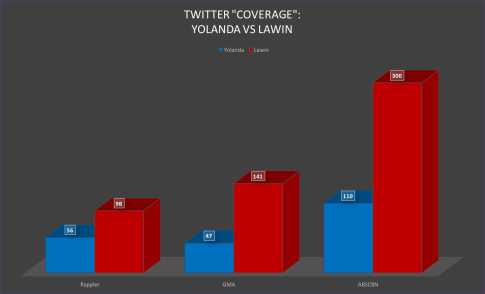
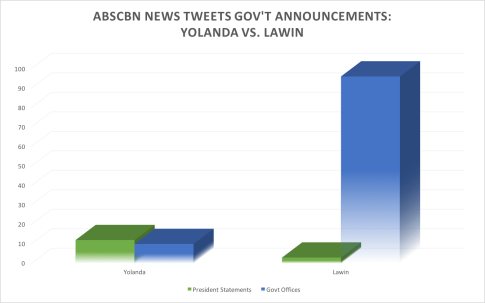
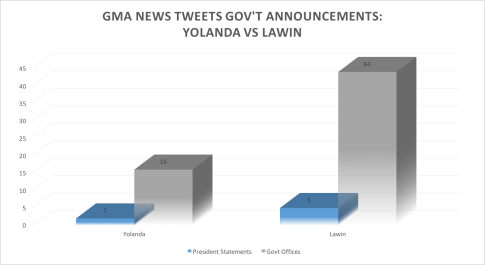
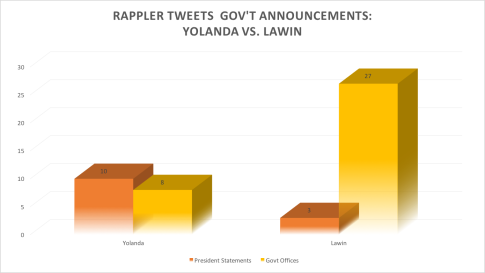
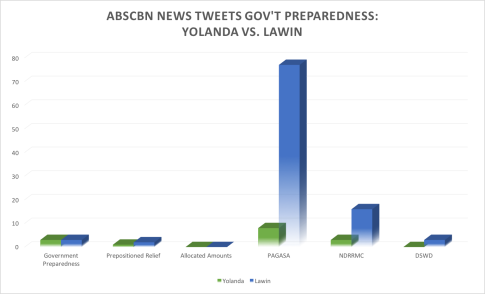
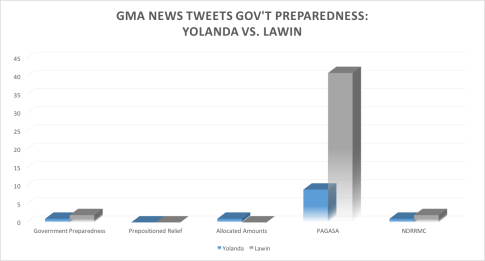
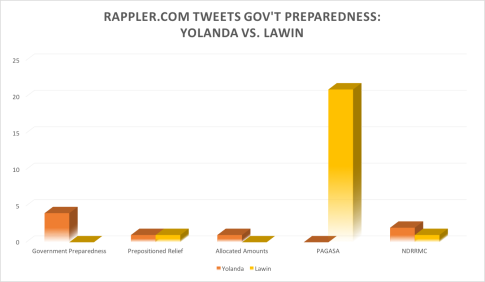
[…] Katrina S.S. […]